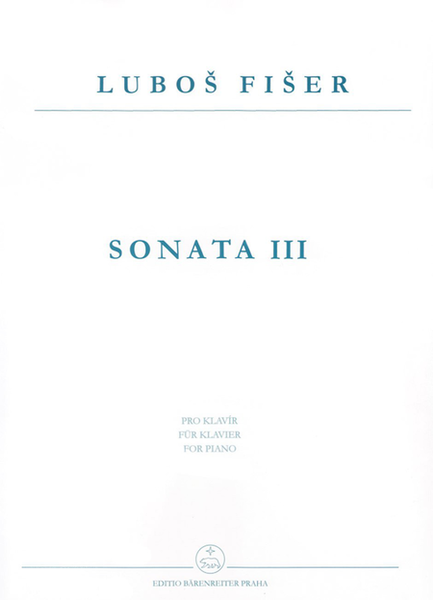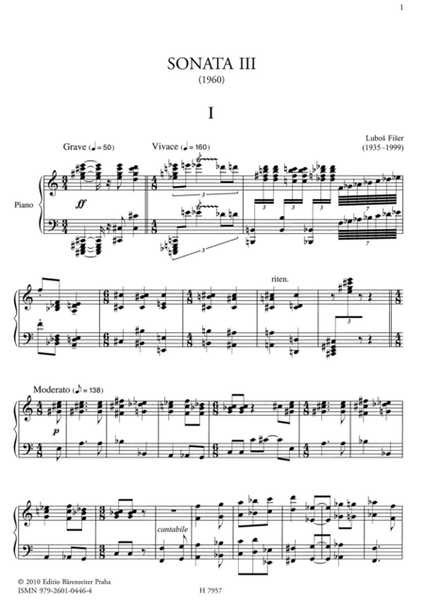Sonata III für Klavier
fur Klavier
-
Ships in 1 to 2 weeks
Details
Description
SKU: PA.H07957
Fur Klavier. Composed by Luboš Fišer. Stapled. Performance score. With Text Language: Czech/German/English. Editio Baerenreiter Praha #H07957. Published by Editio Baerenreiter Praha (PA.H07957).ISBN 9790260104464. 31 x 23.5 cm inches.
Piano Sonata No. 3 was written in 1960 during the composer's studies at HAMU (Music Faculty of the Academy of Performing Arts in Prague) under Emil Hlobil. The first half of the 1960s was the period during which Fiser's musical language underwent fundamental change as he rapidly cultivated his own, distinctive style, established in Fifteen Prints after Durer's Apocalypse. This sonata thus also includes several essential traits which shift his compositional development further. The work has two movements, however, its internal structure abandons traditional form. The piece is divided into several short, mutually contrasting sections, whereby the distinctions between the adjacent parts are emphasised by the thematic and chordal treatment. These contrasts are also supported by the chosen dynamics, tempo and other expressional means. The harmony is largely based on traditional chords or their condensed form while, in certain passages, we will nevertheless come across semitone clusters or fourth chords. The melody is still chiefly diatonic; at times Fiser uses chromatic sequences. These new elements in Sonata No. 3 indicate an attempt to simplify his writing and ensure greatest transparency and impact. This endeavour became a basic characteristic of Fiser's compositions from the mid-1960s onwards.
The sonata originally bore the postscript Fantasia, which was subsequently taken out by the composer. It was first performed by Ales Bilek in 1961. The new setting for this piece is based on the single edition to date (Panton, 1967); only with regard to a few inconsistencies in the score was it necessary to consult the composer's manuscript (kept at the National Museum - Czech Museum of Music).


 Share
Share